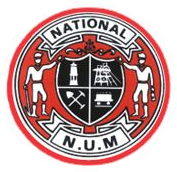This article needs additional citations for verification .(August 2018) |
 | |
| Merged into | National Union of Mineworkers |
|---|---|
| Founded | 1881 |
| Headquarters | Basford, Nottinghamshire |
| Location | |
Members | 28,415 (1907 [1] ) |
| Affiliations | Miners' Federation of Great Britain |
The Nottinghamshire Miners' Association was a trade union representing coal miners in Nottinghamshire, England.
Contents
A Derbyshire and Nottinghamshire Miners' Association was founded in the 1860s, but became moribund by the 1870s, although some branches remained active, including trade unionists such as Samuel Smith, Aaron Stewart and William Hardy. In 1881, they constituted a new Nottingham Miners' Federation based on the rules of the old union, and by 1884 membership had risen to more than 2,000. That year, two unsuccessful strikes took place and membership halved. In response, the union elected new officials and adopted a new name, the "Nottinghamshire Miners' Association", and constitution. [2] In 1889, the Association was a founder member of the Miners' Federation of Great Britain. [3]
In 1926, at the height of the General Strike, General Secretary George Alfred Spencer, on behalf of the Nottinghamshire Miners Association, negotiated a deal with the local mine owners which brought him into conflict with the Miners' Federation of Great Britain, who wished to see the strike continue. Unhappy with the influence of the MFGB, Spencer led a breakaway from the NMA, supported by moderates such as John Hancock, setting up the Nottinghamshire and District Miners' Industrial Union (NMIU) based mostly in The Dukeries. The NMIU lasted for eleven years separate from the Miners' Federation of Great Britain. In 1937, an agreement was reached between the NMA and the NMIU and they merged to form the Nottinghamshire Miners' Federated Union, with Spencer becoming the President. [4]
In 1945, the union became the Nottinghamshire Area of the National Union of Mineworkers. Following the 1984–1985 miners' strike, the majority of members broke away to form the Union of Democratic Mineworkers.






